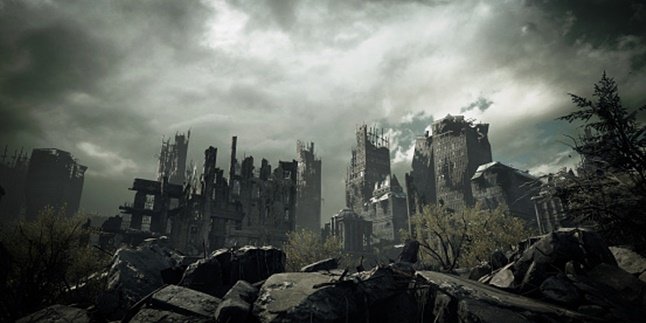Kapanlagi.com - There are several types of literary works, and pantun is one of them. Pantun is an old poem. That means, pantun is one type of literary work that has existed for a long time. In the past, pantun was often used in traditional ceremonies. Therefore, it is important to understand the meaning or significance of pantun.
Unlike other poems or literary works, pantun has its own distinctive characteristics. Therefore, writing or composing pantun cannot be done casually. We need to pay attention to the characteristics and rules that must be fulfilled when writing pantun. By understanding the meaning or significance of pantun, you will know its characteristics and how to create pantun.
Now, to understand the meaning or significance of pantun, let's take a look at the following explanation.
1. Meaning or Definition of Pantun

(credit: unsplash)
As mentioned earlier, pantun is an old poem. As an old poem, pantun originated from the Malay tradition. The emergence of pantun began with oral tradition, and later developed into written form. Meanwhile, the writing of pantun must be based on several rules. This is what makes pantun unique and different from other literary works.
The meaning or definition of pantun is closely related to the rules of pantun writing. The rules and requirements for writing pantun are included in the meaning or definition of pantun according to the Indonesian Dictionary (KBBI). Therefore, to understand the meaning of pantun and the rules in its writing, we can refer to the explanation in KBBI.
In KBBI, the meaning or definition of pantun is a form of Indonesian (Malay) poetry, in which each stanza consists of four lines with a specific rhyme pattern, with each line usually consisting of four words. The first and second lines are usually for the introduction (sampiran) only, while the third and fourth lines are the content.
2. Characteristics of Pantun

(credit: unsplash)
Knowing the meaning or significance of pantun would not be complete without knowing its characteristics. By knowing its characteristics, we can identify whether a work can be considered as a pantun or not. The actual characteristics of pantun are as explained in the definition of pantun in KBBI. However, for a clearer understanding, here is a more complete explanation of the characteristics of pantun.
1. First, pantun always consists of four lines, each line consists of 8-12 syllables.
2. Second, pantun is always written with a rhyme pattern of a-b-a-b or a-a-a-a.
3. Third, in one pantun, there are always two parts, namely sampiran and isi.
4. The first two lines of the pantun are sampiran. Sampiran often relates to natural phenomena that may not be related to the second part. However, sampiran is very important for delivering the rhyme of the poem.
5. The third and fourth lines of the pantun are the isi or message to be conveyed.
6. Generally, pantun is anonymous, so the exact name of the writer or author is unknown. As mentioned earlier, in the past, pantun was mainly spread orally. Therefore, it is very difficult to trace the first speaker of a pantun.
3. Types of Pantun and Examples

(credit: unsplash)
Apparently, there are many types of pantun. These types of pantun can be distinguished based on the meaning or message contained in them. The types of pantun according to their meaning or message are as follows.
1. Religious Pantun
As the name suggests, religious pantun is a pantun that contains an invitation to do good based on religious values.
For example:
Many months, the matter of the month
Not as noble as the fasting month
Many gods, the matter of God
Not as noble as the One and Only God
2. Amanat or Advice Pantun
As the name suggests, amanat or advice pantun is a pantun that contains advice or moral messages. Therefore, in this pantun, there are wise messages to do good.
For example:
Going to Kota Blitar
don't forget to buy breadfruit
If you want to be smart
study diligently
3. Humorous Pantun
Meanwhile, humorous pantun is a funny pantun. This rhyme is created with the aim of entertaining. However, it is not uncommon for humorous rhymes to be used as a medium for conveying criticism or satire.
Example:
Sitting sweetly on the beach
Seeing a girl, oh my, there's no other
Most of the youth are relaxed
The elderly find it difficult to laugh
4. Figurative Rhyme
Figurative rhyme is a rhyme that contains figurative sentences. Thus, behind the figurative language, there is a message that wants to be conveyed implicitly. Therefore, to understand the meaning or significance of figurative rhyme, interpretation is often necessary.
Example:
Hunting in the open field
Finding a deer with striped feet
Learning excessively
Like a flower that never blooms
5. Riddle Rhyme
Just like humorous rhymes, riddle rhymes are also often created with the aim of entertaining. However, the content of riddle rhymes is more specific, which is to solve riddles.
Example:
If you are a young man
Wearing pants with your own style
If you are wise like a gentleman
What is the fruit outside the seed?
However, it is worth noting that in addition to the types and examples above, rhymes can also be distinguished based on their themes. For example, love, friendship, education, and so on. Every theme can be turned into a poem, as long as the characteristics of a poem are fulfilled.
Those are some of the explanations about the meaning or significance of a poem, along with explanations about its characteristics and types. Hopefully, it is beneficial and adds to your knowledge.
(kpl/psp)
Disclaimer: This translation from Bahasa Indonesia to English has been generated by Artificial Intelligence.















